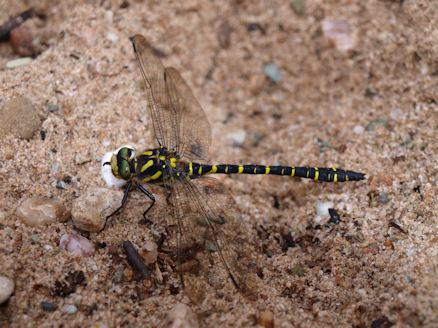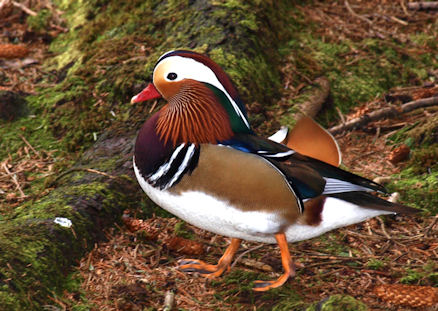Wildlife in the Vale of Leven
Our thanks again to regular contributor Benjy Boyle and others for these wild-life and natural phenomenon photos taken at various place in the Vale and on the Loch in recent years.
May 2 2014
A picture of the Muscovy ducks that have been hanging around with their relatives down at the Monkey Island in front of the Balloch Hotel for the last couple of years. They must like it here.
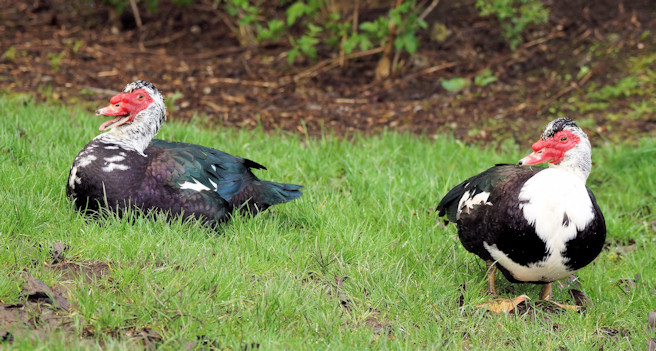
April 6 2014
These two pictures from Benjy Boyle are of a pair of Mandarin Ducks taken as they sat on a dingy on the Leven at Balloch. They are quite rare in the area or at least have been until now, although they have been seen elsewhere on the Loch. There is another picture of one on this page (below) taken by Tommy Gilmour at Rowardennan last year.
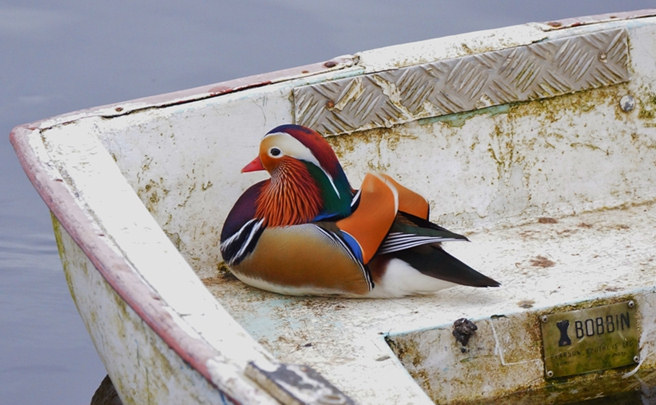
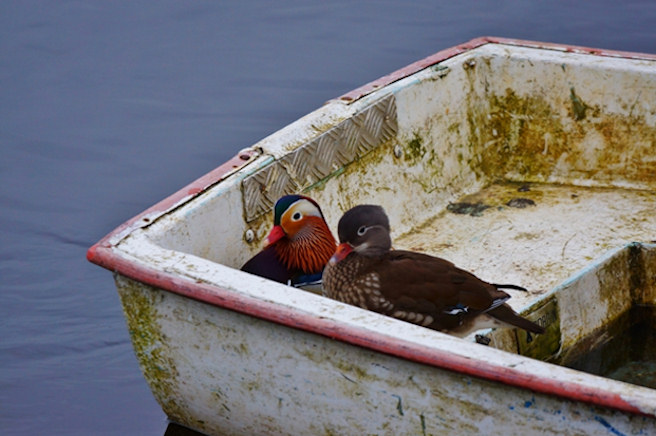
March 31 2014
This image is of a woodpecker taken amongst the trees to the north of the Walled Garden in Balloch Park. Spotted by Benjy Boyle, he could hear a pair working quite close together, which figures since it is the mating season and although he had a good look round after taking this first shot he didn't find the second bird.

February 22 2014
The Invader from the South
The following two images were taken by Benjy in Balloch Park last week. They are of a Nuthatch, which is a bird normally native to England and Wales. The milder winters of recent years have seen reports of it moving into the south of Scotland and this would confirm it.
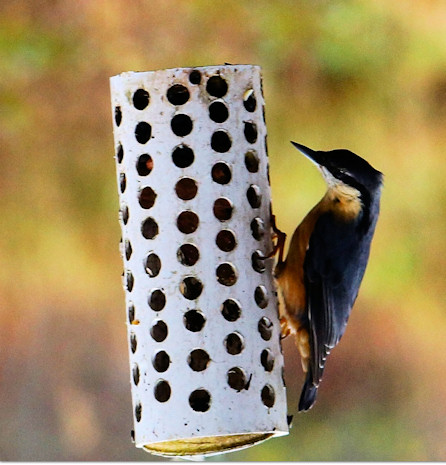
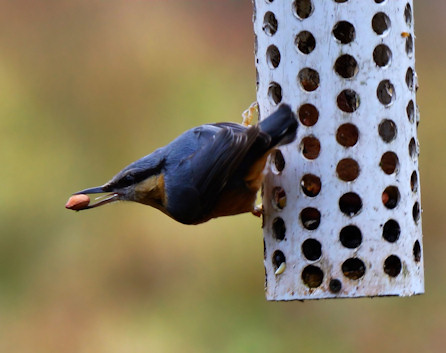
Nuthatch with a nut in its beak.
More information on Nuthatches here >
February 4 2014
Most of you will remember a bit of a stir a few years ago when a seal was spotted in the Leven. Benjy Boyle spotted the highly unusual site of not one but three seals making their way upstream in the river near the Vale Cricket park on Saturday 1 February 2014.
We don't know if this is related to the current high state of the river but the fact that they are able to make steady progress against the current when the river is heavily in spate illustrates just how powerful these animals are. Not sure if the local anglers will be pleased to hear this.
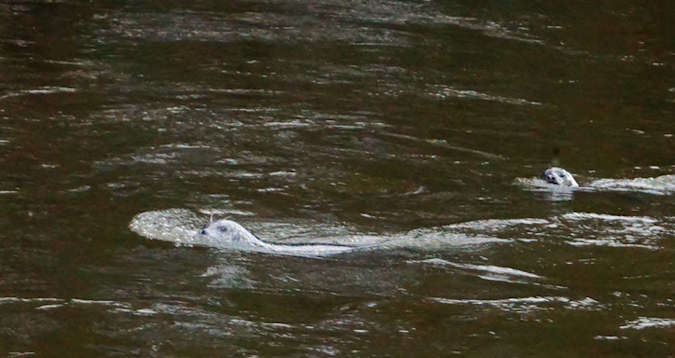
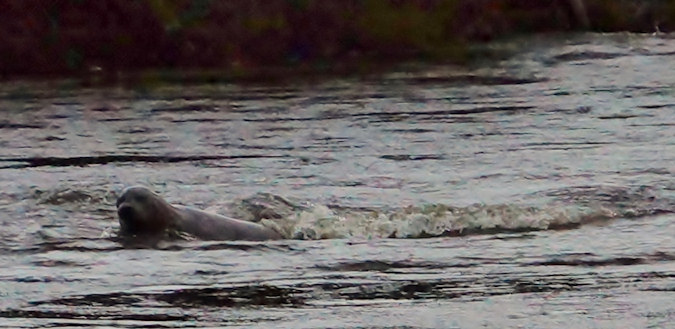
December 2013
Another fine addition to Benjy Boyle's wildlife collection - a woodpecker - photographed yestarday, 17th December 2013, in Balloch Park. Its feeding in its favourite habitat, a dead tree which is full of insects etc. Most people will have heard a woodpecker but its a bird which we rarely knowingly see since its usually well hidden deep in woods, so its black and white wings and red breast will be a revelation to many, whose only other image is from the Woody Woodpecker cartoons.
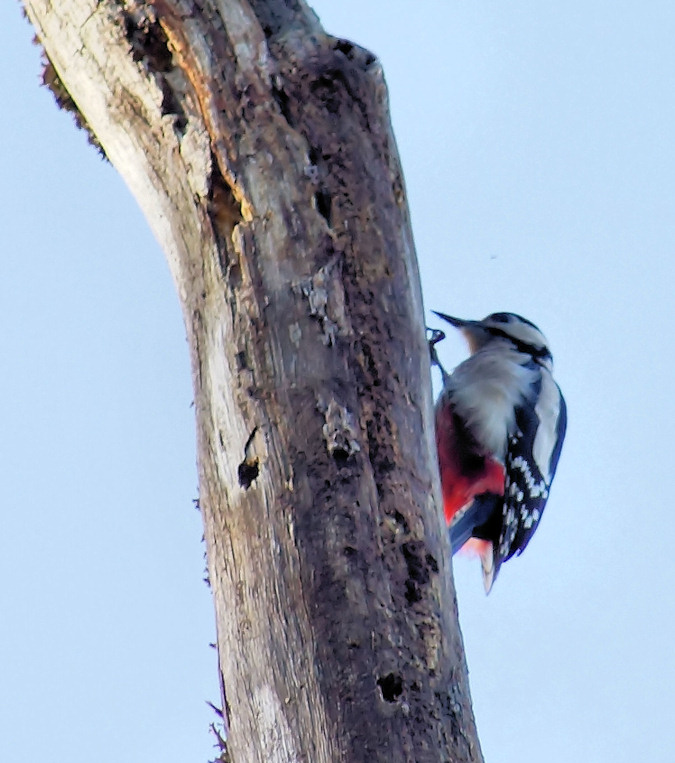
August 2013
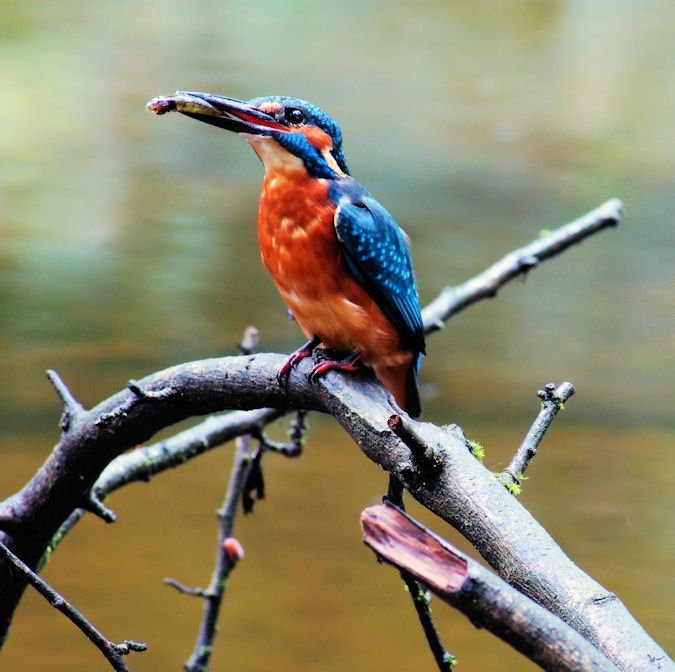
An excellent picture of a kingfisher on the River Leven in Alexandria from Benjy Boyle. Note that it has been busy doing what kingfishers do - it has a fish in its mouth. See the previous entry on kingfishers below.
July 2013

A goldfinch helping itself to straw from a flower-pot in Benjy's garden.
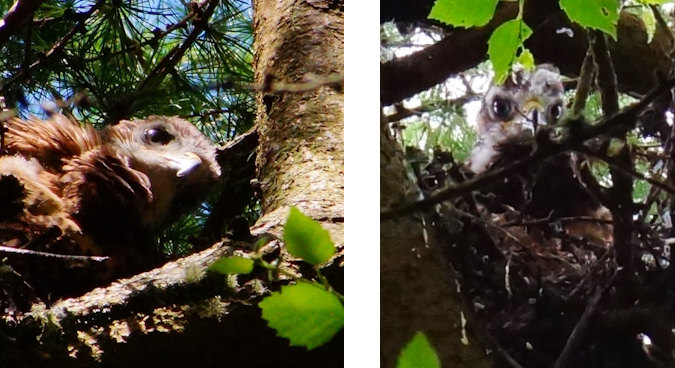
Two photos of a buzzard chick in a nest above Pappert.
Something Different About These Birds
Benjy Boyle once again sent us for these photographs of garden birds with a difference taken in the Vale in the last few days.
The White Blackbird
A contradiction in terms you might think. If a bird is white how can it be a blackbird? Well, firstly it is most definitely a blackbird and although rare such birds are probably measured in their hundreds in the British Isles. They are not Albinos as the colour of their eyes shows but have a condition known as Leucism in which the usual colouring chemicals are present in the body, just not in the feathers.
Unfortunately their bright white plumage makes them vulnerable to predators, but this bird has been present in the Dalvait area of Balloch for some time and Benjy’s informant has taken many photographs of if. So if you happen to be in the area, keep an eye out for what may turn out to be a once in a lifetime view of a white blackbird.

Who says it's not a Nest Box?
Fortunately blue tits are not rare: they are great survivors and a welcome colourful addition to the gardens. These photos may help explain why they are so resilient. A pair has taken over an ashtray outside a local establishment as a nesting box – we’ll tell you where when the chicks have flown the nest. It must be their second brood because it only happened in the last few days and they had built the nest and laid the eggs while the place was closed and the ashtray not in use. Needless to say the ashtray is now covered in “Do not use” notices and another open one has been provided. The chicks have been hatched, so more photos should follow shortly. Compare the size of the blue tit to the size of the hole in the ashtray.
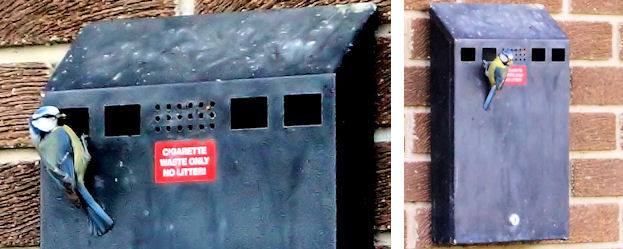
June 2013
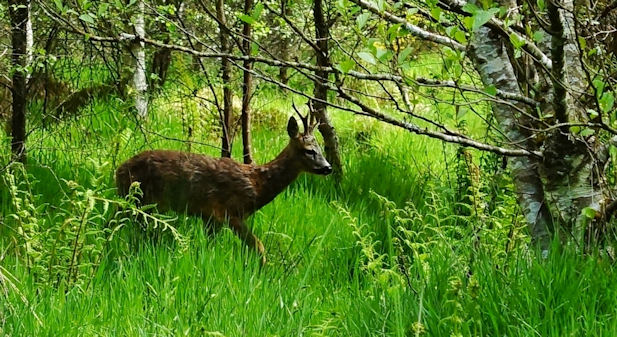
Image of a deer spotted on the hill behind Bonhill by Benjy Boyle
Tommy Gilmour is a keen amateur photographer who works for the Loch Lomond National Park authority. Spending much of his time in the great outdoors Tommy comes across some interesting wildlife. He has submitted the following two images.
The one above is a Golden Ringed Dragonfly which Tommy spotted on the beach at Port Bawn (Inchcailloch Island).
The image below is a beautifully coloured Mandarin Duck which was spotted near the car park at Rowardennan. You can click these images to enlarge them.
May 2013
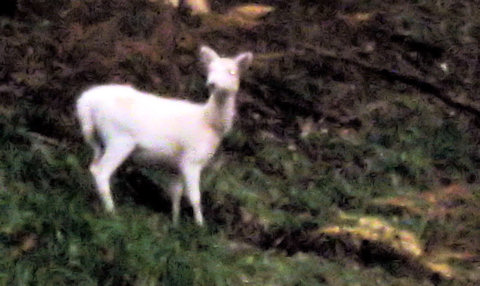
White Deer. This was taken on the Burial Island, Inchcaillach. Benjy was coming down the path from the grave-yard to the jetty when he came virtually face-to-face with this albino roe deer stag. It paid no attention to Benjy but continued to graze until he got his camera out, which was when it turned to look straight at him and Benjy got a hurried shot. The stag then sauntered off into the undergrowth in its own time, completely unfazed by Benjy’s presence. As most people who have encountered roe deer will know, they usually flee humans. However, when they are on the islands on the Loch, they seem to have less fear of humans and although they will usually move off, quite often they do so slowly.
There have been albino stags between Balmaha and Luss for many years – the string of islands across the Loch more or less between the two villages has been a migration route for deer since time immemorial. The first sighting of a white stag of which we have a record was more than 50 years ago, when one was spotted swimming with some hinds between Inchfad and Inconnachan, but it’s very likely they go back a lot further than that around the Loch. Since that first sighting they have been spotted quite regularly by anglers, walkers, farmers and, very early in the morning, by workers on the Loch Lomond Golf Course. This is, however, the first photo of one which we have seen.
We have termed the deer “albino”, but in fact no zoologist has confirmed that they actually are albino and there may be another explanation for their colour.
Footnote: I was out walking and passing through the Loch Lomond golf course a while ago when I saw one of these white deer in the undergrowth some distance away. Unfortunately I was not quick enough to capture an image. Bryan Weir.

Fox breaks cover on Pappert Hill. The fox used to be a completely rural animal, rarely seen in the Vale other in any other urban setting. That has changed substantially and throughout the country it has become something of an urban pest with its raids on dustbins and fondness for cats. In the Vale houses have encroached on its habitat and although this photo was taken not far from houses, it was in the sort of surroundings which the fox could rightly claim to be its own.
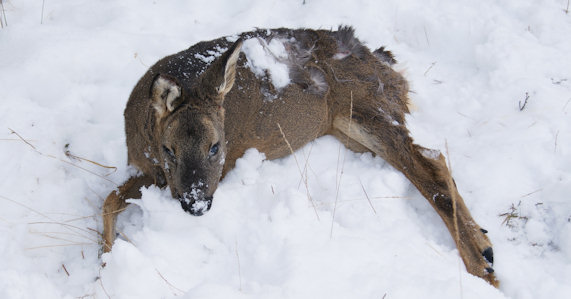
Injured Roe Deer in the Snow. At first when Benjy caught sight of this deer he was surprised that it did not make off more quickly than it did, but when it did turn to run it seemed that it might have an injury to one of its rear legs. Sure enough a day or so later Benjy found its carcass about half a mile from where this photo was taken.
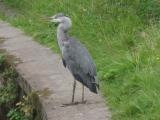
Heron standing on the banks of the Leven. The heron is one of the most frequently seen birds in the Vale, although people don’t usually realise they’re looking at it – Alexandria Fountain is topped by a figure of a heron.
Although it is not exactly common and is rarely seen more than a few hundred yards from water, a stroll along the banks of the Leven, particularly but not exclusively the tidal stretch, will often bring you into contact with a heron.
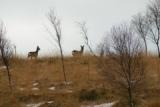
Roe deer on the skyline at Pappert. There are many roe deer on the hills on both sides of the Vale and in the countryside to the north on both sides of the Loch.
Although they are by nature timorous and avoid contact with humans, the severity of the last couple of winters has brought them down into people’s gardens, which has been a pleasant surprise for many householders first thing on a winter’s morning.
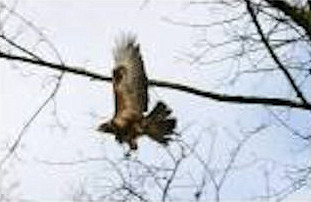
A Buzzard on Pappert Hill. Changes in land use and management in the Scottish countryside has seen a huge rise in the population of birds of prey of all types in the past fifty years. In the Vale forty years ago, birds of prey were a rarity and few people could have distinguished between them because they never saw one.
There was supposed to be a pair of buzzards based somewhere about the Black Woods which worked the east side of the Vale from about the Stirling Bridge to the Lions Gates. There was also a pair of peregrine falcons somewhere up about Arden, and that was it.
No sparrow-hawks were recorded. The nearest magpies, which technically aren’t birds of prey, but they don’t know that although the small birds certainly do, were at Drymen Bridge. Now there’s a surfeit of birds of prey and we in the Vale have lost a considerable part of our small bird population. A pair of buzzards probably still nest up to-wards Pappert, but they have been joined by many others along and across the Vale.
Another pair of buzzards can often be seen covering the wider area from the Auchencarroch road at Westerton over to the Boturich road.
The White Rainbow
This is not about wildlife, more of a natural phenomenon. On 7 February this year it was very foggy in the Vale. I decided to go for a walk and to get above the fog line. I started up the Boturich road and as I came through the edge of fog into bright sunshine I saw what looked like a white rainbow.
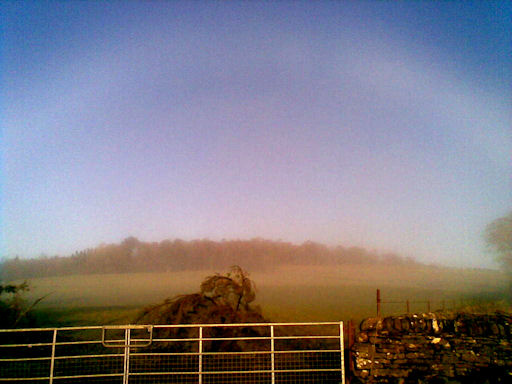
Unfortunately the only camera I had with me was on my mobile phone and I struggled to find a position where I could get a shot of this. By the time I got this one it had started to fade but it is still clearly visible. My subsequent research suggests that this is quite rare and actually called a "Fogbow". (Bryan Weir)
"Rainbows are formed by raindrops which are so large that rays passing through them follow well defined 'geometrical optics' paths. With the very finest droplets, such as those forming mist or fog, the light is no longer reflected and refracted within the drops, but is diffracted by them instead to produce a much broader and pale bow - the fogbow. In other words the fog and mist droplets are too small to refract light. Light hitting the tiny droplets merges into white, rather than being separated into rainbow colours. "
February 2011
Kingfishers on the River Leven
 The kingfisher is one of Britain’s most beautiful birds with a predominantly bright blue plumage and reddish breast. As its name suggests it is essentially a waterside bird which feeds on small fish. It has been a resident on the Leven’s banks from time immemorial but it would be fair to say that not many people have seen the Leven’s kingfishers, or at least not many people realise that they have seen them.
The kingfisher is one of Britain’s most beautiful birds with a predominantly bright blue plumage and reddish breast. As its name suggests it is essentially a waterside bird which feeds on small fish. It has been a resident on the Leven’s banks from time immemorial but it would be fair to say that not many people have seen the Leven’s kingfishers, or at least not many people realise that they have seen them.
It is not particularly reclusive but it is easily disturbed and is very fast in flight over the water so it can be hard to identify by an eye not expecting to see it. For the past couple of years Benjy Boyle has been trying without success to take a photo of one of the pair whose beat is the Leven between where it emerges from the Loch and Linnbrain Hole. He has seen the bird many times and many members of the Angling Club have been giving him regular reports on where they have spotted a kingfisher as they sailed up and down the river or fished from the tow path, so he had a good idea of where it fished and in which waterside bushes and trees it landed to look for fish.
Apart from its speed and elusiveness a major consideration in trying to take a shot of it is not to encroach on its habitat since it nests in holes in the ground. You could easily step on the nest and destroy it if you try to get close to the bird. So Benjy was restrained to trying to get his photo from the tow path.
A number of times he started to line up a shot with his camera, but every time the movement disturbed the bird and off it flew. Benjy was beginning to despair when in mid October 2012 he had already lined up the shot and the bird landed on a branch right in the middle of it. Before he could press the camera button it shot away but as Benjy began to curse his luck yet again the kingfisher landed again on exactly the same spot – within 2-3 seconds. Benjy actually still had his camera focused on the branch and he didn’t wait a second time. The result is the first photo below.
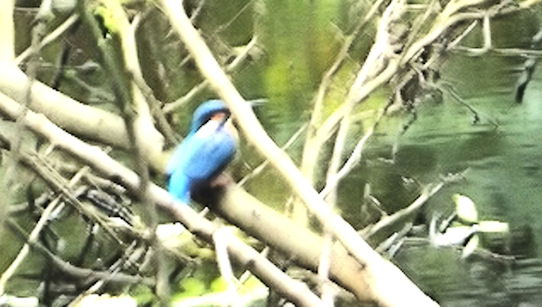
As is the way of things, having landed this first photo of this beautiful bird, Benjy has since managed to capture it many more times in approximately the same area. As he’s said “to the kingfisher I’m just the paparazzi and it obviously likes basking in the publicity. It’s as if it's following me around now.”


